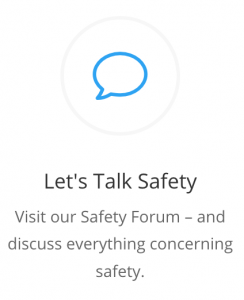Hazard Communication & Chemical Safety: Introduction to (HazCom)
Hazard Communication & Chemical Safety: Introduction to (HazCom)
You can find the show notes to each episode, links to the information mentioned on the podcast, the social media platforms we’re on, and anything else related to the podcast at WarehouseSafetyTips.com.
If you’re a seasoned Podcast Listener, this podcast will be different from most you listen to. It’s based on exactly what the name implies – Warehouse Safety Tips. And since the people in that industry are busy – we know time is money so each episode will be as short and to the point as possible.
And now that all that is out of the way – let’s get to the Podcast!
Hazard Communication & Chemical Safety: Introduction to (HazCom)
Our topic this month focuses on Hazard Communication, also known as HazCom. This standard is built on a simple principle: every team member has the right to know about the hazardous substances they may come into contact with during their shift. That includes how to handle them safely and what to do if something goes wrong.
Hazardous chemicals, ranging from cleaning supplies to fuels, industrial solvents, paints, and everything in between, are present in nearly every facility. These substances can pose serious risks if not identified, stored, and communicated properly. A strong Safety Culture depends on everyone understanding these hazards and following safe practices.
Here are a few tips to assist you with staying safe around hazardous chemicals:
- Know what’s in your facility. All chemicals on site should be listed in a Safety Data Sheet (SDS), which must always be available to all team members. If you are unsure about a substance, check the SDS or ask a supervisor for guidance.
- Read the labels—every time. Before using any chemical, look at the label for hazard warnings, handling instructions, and required personal protective equipment (PPE). Never assume two similar-looking containers hold the same contents.
- Please follow the signage and posted instructions. Areas with chemical storage or usage will have signs indicating risks—flammable, corrosive, toxic, etc. Respect those warnings. They’re there to prevent accidents before they happen.
- Wear the correct PPE for the job. Depending on the chemical involved, gloves, goggles, respirators, or protective clothing (To name a few) might be required. Using the correct PPE is a key part of protecting yourself from chemical exposure.
- Be sure to report damaged or missing labels. A label is your first line of defense. If labels are unreadable or missing, please treat the container as unknown and report it immediately. Don’t try to guess what’s inside.
Hazard Communication is more than paperwork, posters, and labels—it’s about making sure everyone in the facility understands the risks around them and knows how to act safely. It requires clear communication, consistent training, and a shared responsibility between leadership and staff.
Building a safer workplace starts with knowledge. When everyone knows what substances are in use and how to interact with them safely, injuries and exposure incidents decrease. Make it a habit to check labels, read SDSs, and ask questions if something seems wrong.
Thank you for being part of another episode of Warehouse Safety Tips.
Until we meet next time – have a great week, and STAY SAFE!
Before moving on – here’s a word from one of our sponsors.
If you’ve ever been to or worked in a warehouse – you know just how important safety is to management and staff. It’s almost impossible to go 10 steps without seeing Safety Tape, Angles, Signs, and/or products.
These items show us how to be safe and avoid danger in the workplace. And if you’re looking for the best products to make this happen – look no further than Mighty Line!
Mighty Line Floor Signs / Floor Markings offer the best industrial products!
Go to MightyLineTape.com/SafetyTips to request a Sample Pack of their incredible Safety Signs and Floor Markings.
What makes Mighty Line the superior choice in keeping your facility safe and productive?
- Mighty Line Tape is the strongest floor tape on the market and has a beveled edge that increases durability for industrial brush scrubbers, forklifts, and heavy industrial wheel traffic.
- Easy installation and removal thanks to Mighty Line’s peel-and-stick backing. You can apply and reapply it during installation – and it leaves no sticky residue should you need to remove it. This allows the ability to change workflow areas quickly and easily – and not have the downtime associated with painting or using floor markings that leave behind a mess when you remove them.
- Mighty Line Tape is 7 times thicker than the average Safety Floor Tape.
- Mighty Line’s Signs and Markings come in various shapes, colors, and sizes. And if they don’t have what you’re looking for in stock – their Customize It Program allows you to create exactly what you’re looking for.
- Mighty Line offers a Limited 3-Year Warranty on their Floor Signs and Markings.
- And last but certainly not least – Mighty Line Products are Patented and PROUDLY Made in the USA!
We’re proud to have Mighty Line as THE Official Floor Sign / Floor Marking Company for the Warehouse Safety Tips Podcast and Site.
Again – Go to MightyLineTape.com/SafetyTips to request a Sample Pack of their incredible Safety Signs and Floor Markings.
If you visit WarehouseSafetyTips.com – you’ll find the Show Notes for this episode.
Thank you for listening to Warehouse Safety Tips – and have a SAFE day!
Like and follow us on these Social Platforms:
https://www.instagram.com/warehousesafetytipspodcast/
https://www.twitter.com/YourSafetyTips
https://www.facebook.com/warehousesafetytips


